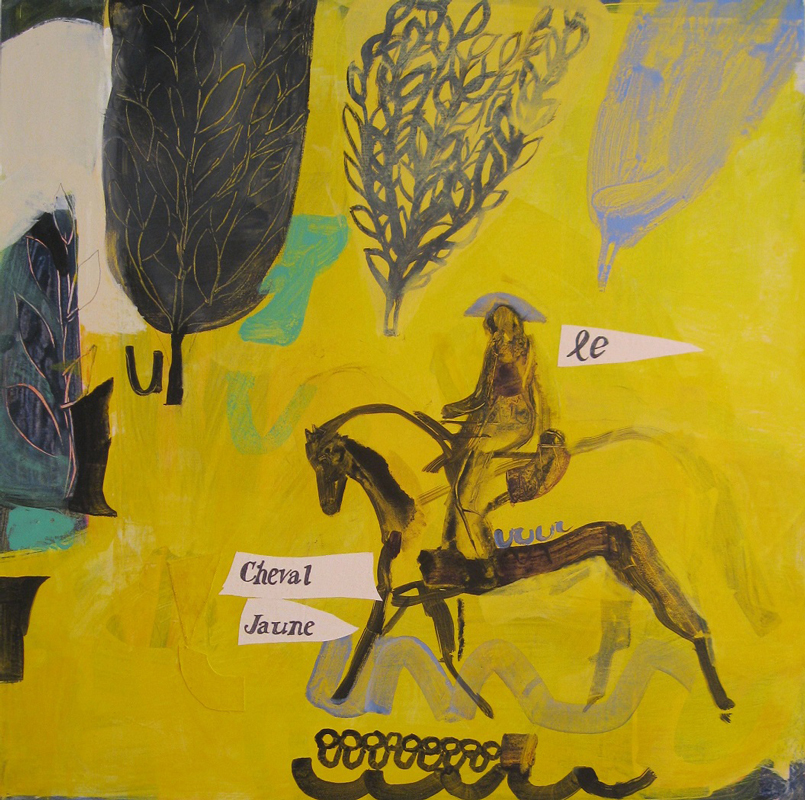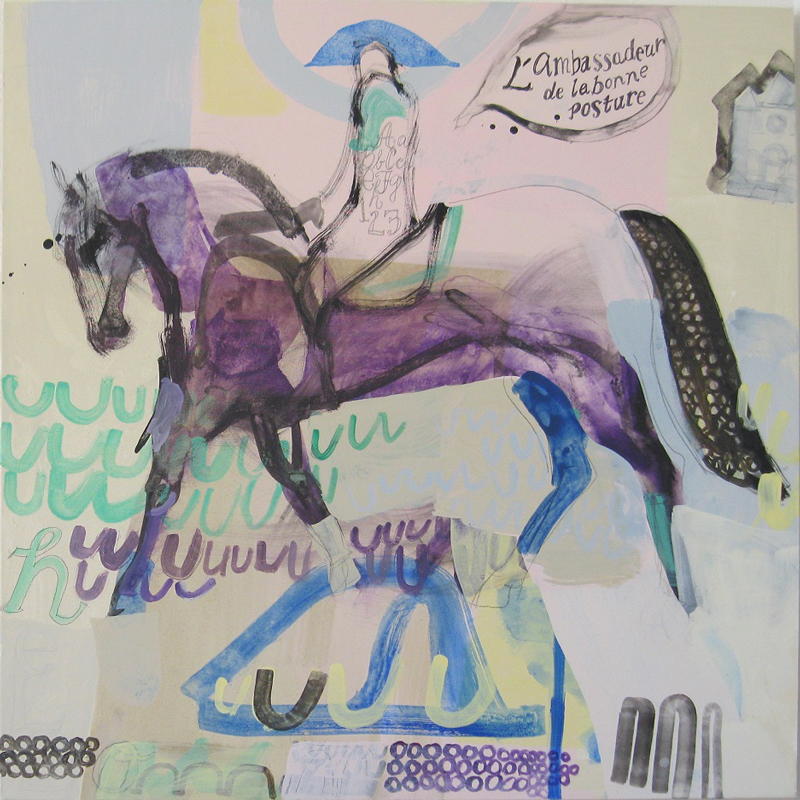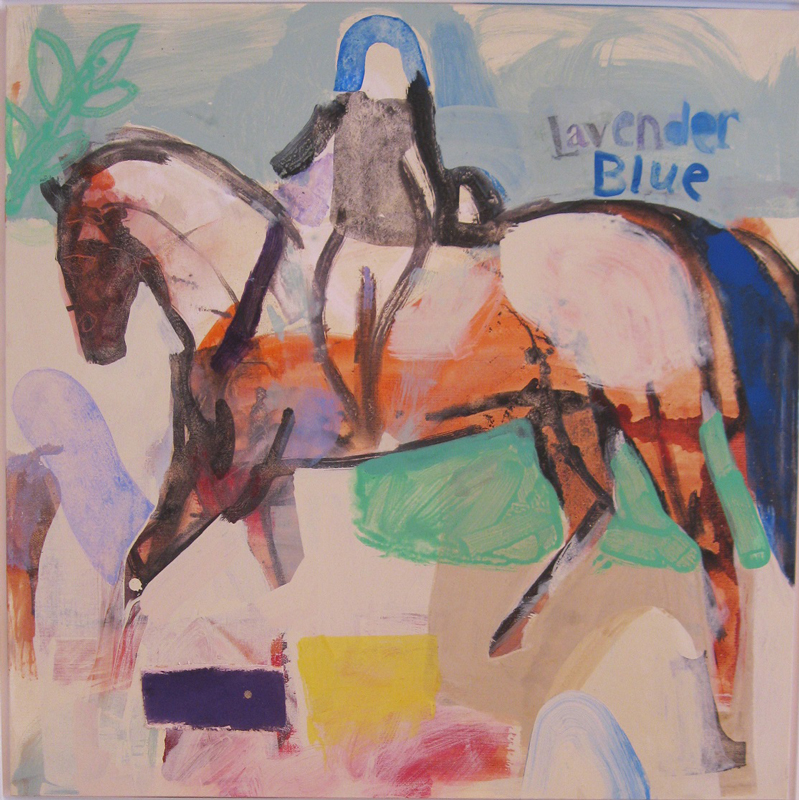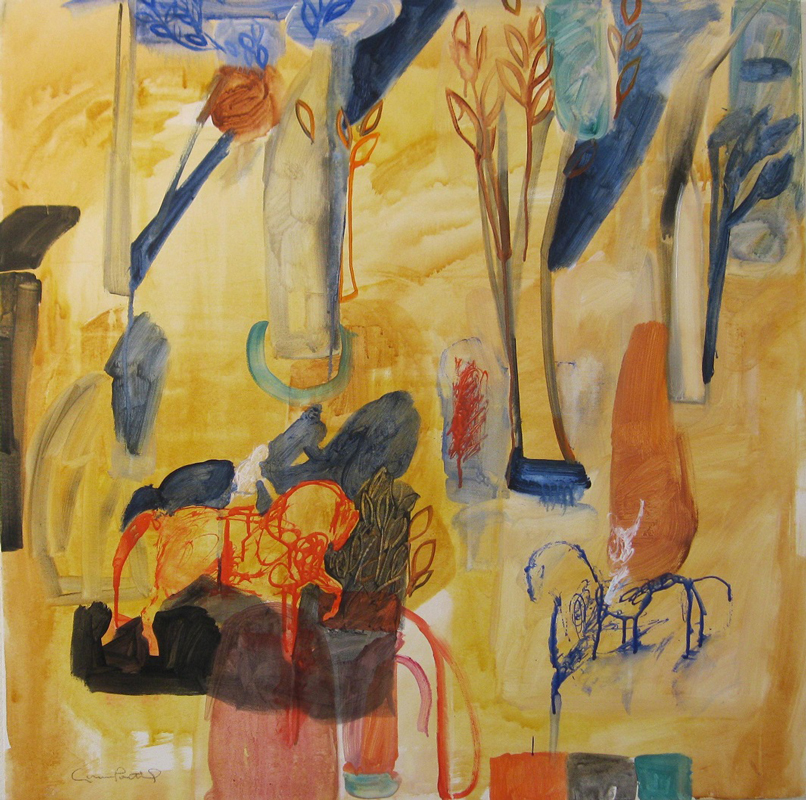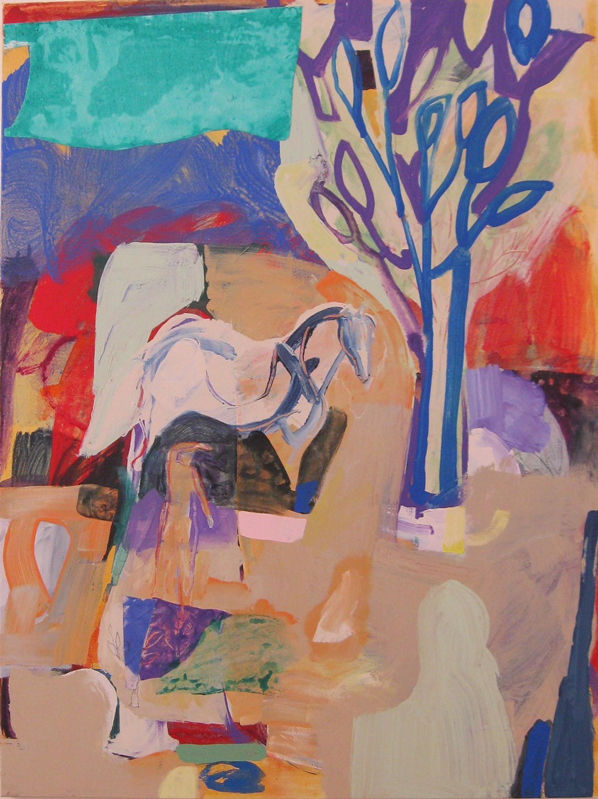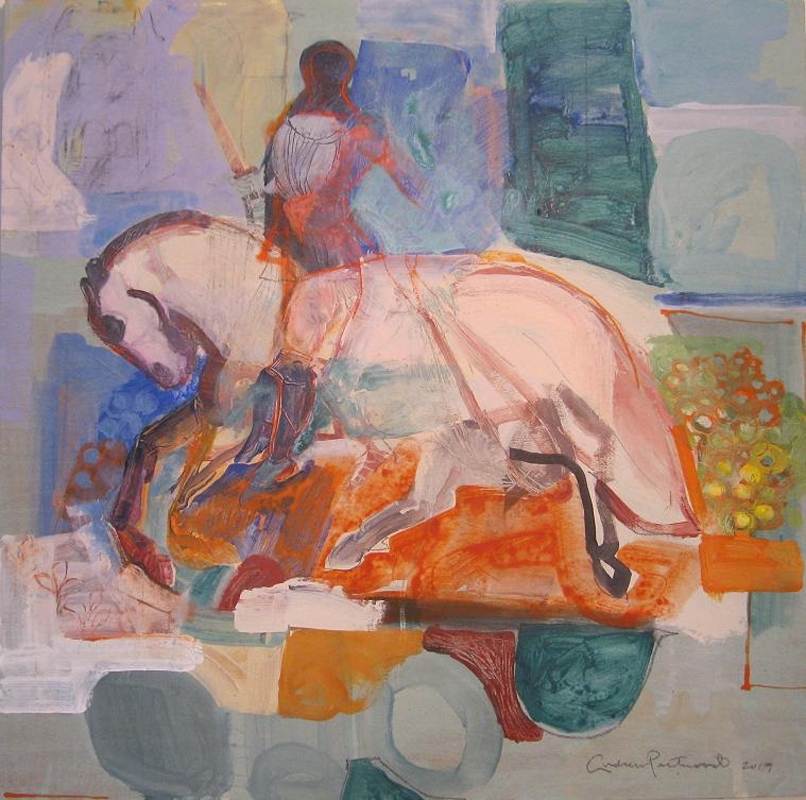By STEPHANIE PETERS
Originally published in 2013 and updated with new art in 2021.
Whether it is the sweep of his brush across a canvas or the measured motion of pulling a monotype through a hand printing press, the outcome of artist Andrew Portwood’s skillful effort is essentially the same—lively, intuitive, and fascinating works of art.
Portwood, based in New Orleans, Louisiana, is busy in his studio these days—balancing his time between his large canvas paintings and smaller abstract monotypes. His canvases, often populated with a spectrum of horses, come alive with a surprising mix of media, frequently combining paint, charcoal, pencil, and paper. The resulting surfaces are rich with depth and texture.
“You have to retain a sense of play.”
“Basically, painting makes me happy and produces a certain ecstasy,” says Portwood. “I think most artists would agree that the flow of sub-conscious thought is key. You have to trust your intuitive instincts and allow happy accidents to occur. This usually results in the most interesting work. You can’t be too fussy or precious when you paint. I think you have to let go—at least that is what I am presently striving to do with my work. You have to retain a sense of play.”
“There is often a tendency to correct certain areas while a piece is in progress, but I really like the thinking lines and imperfections,” Portwood explains. “I consider them random marks of human character.”
His current work is based in realism but is, at times, abstractly rendered. His departure from realistic interpretations has been a gradual transition from his earlier years spent working in advertising, graphic design, and book illustration.
“I built a lucrative niche in advertising as a concept artist, where I drew everything and anything that could be produced in print or film,” he adds. “It was a great training ground for an artist because you had to build a story from your imagination and life experience with just pencil drawings, body language, and expression of figure. It was like building a stage of actors, but two-dimensionally.”
In his art, Portwood’s vision evolved into a more personal form of expression. Dreams and emotions inspired his creative processes and provided a basis for his portraits, figures, and landscapes.
Daughters were an inspiration
In the past his two daughters created a wellspring of concepts for his paintings and drawings. “They would bring home beautifully illustrated books from the library and we would read and look at the pictures, and I would make up my own stories for them, like my father used to do when we were children,” says Portwood.
His daughters loved his imaginative stories, so he decided to illustrate a children’s book. Everything came together when he partnered with a local writer, and they put together a book that was eventually published by Putnam in New York. “It was a good book for a first try, explains Andrew. “I was pleased and excited, but it was not about horses. It was a story about children’s spirit and imagination.”
One of his later book covers depicted a brick townhouse in the city—set in the evening with children looking out of the windows into the starry night sky. Included is a small drawing of a blue horse tacked onto the wall in their room. “This little horse became a symbol for me, and I kept it in my subconscious mind until I began to paint again 10 years later,” says Portwood. “My immediate inclination was to paint horses, and they gloriously materialized in all different colors on imaginary landscapes that I dreamed up. I am still painting these horses.”
To Portwood, “Horses are metaphors and characters for feelings and memories of all different moods and colors. So, for me, the horse serves as a metaphor, a symbol of hope, love, strength, freedom, and independence.”
See the original Andrew Portwood gallery feature in Equestrian Living magazine.
